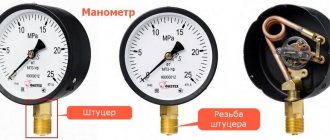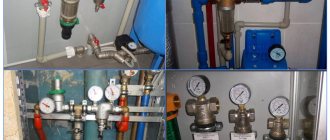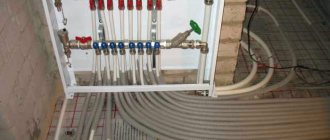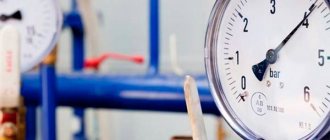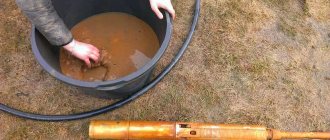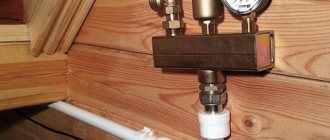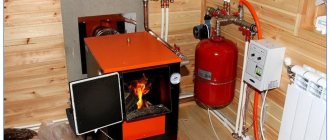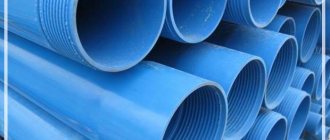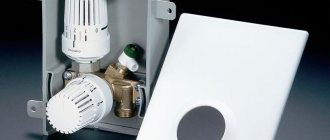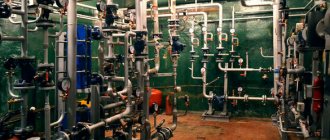What is hydrostatic pressure
If external forces act on the surface of water, then pressure in the liquid will be transmitted equally in all directions. This is the basic law of hydrostatics, which was discovered by the French scientist Blaise Pascal in 1653. And the force that acts on the liquid is mainly the ordinary force of gravity.
In solids, molecules form a crystal lattice. And, rigidly connected to each other, they can transfer pressure only in the direction in which the force applied to the object acts. And in a state of rest, the latter is directed strictly downward.
In liquids there is relative freedom for little movement. Therefore, molecules of a gas or any liquid can transmit pressure in any direction. And under the influence of gravity, water simply spreads in different directions if its movement is not limited by the walls of the vessel.
If the liquid is at rest, then there are completely no tangential and tensile forces inside it. This means that the pressure of the water column is directed strictly along the internal normal to the base. That is, no matter what shape the vessel is used, the pressure inside it will always act only at an angle of 90 degrees relative to the sides of the container.
The same water pressure in different vessels Source azureedge.net
Since in everyday life liquids are always limited by some walls (tank, pipes), there is a dependence of water pressure on the height of the column. That is, it is important at what distance the surface of the liquid is from the base point to which the force is directed.
See also: Catalog of companies that specialize in water supply, sewerage and related work
Factors influencing the indicator
In the absence of external influence, two factors play a role:
- pillar height;
- density.
The higher the level of water poured into the vessel, the higher the pressure at the bottom. If there is mercury in one container and water in the other, and the levels of liquids are the same, then in the first case the pressure on the bottom is greater, since mercury has a higher density.
Atmospheric air also presses on the contents of the vessel from above. Therefore, in communicating vessels the level is the same, because in each of them the atmosphere above the surface is the same.
If you apply a piston to the surface and press on it, then the pressure will consist of:
- external force;
- water weight.
Moreover, the shape of the vessel does not determine the amount of force created by the pillar. It will be the same with the same height of the column, although the walls of the container may expand upward or narrow.
Water pressure measurement and calculation formula
The unit of measurement for pressure in a liquid is 1 mm of water column. It is equal to 9.8 Pa (N/m²). But in practice, pressure in water is measured in kilogram-force per square centimeter (kgf/cm²). And in this case, the unit is called one atmosphere (1 at). A meter of water column will total 0.1 at.
To accurately calculate the fluid pressure (P) over a certain area, you must use the formula:
P = p × h × g
To do this, you need to know the density of the liquid (p), the height of the column (h) and the speed of free fall (g).
The density of water depends on its temperature. But it is generally accepted for any calculations to take the average value of one thousand kilograms per cubic meter. The acceleration of free fall is also used to be rounded to 10 m/cm². Based on these data, it will not be difficult to calculate how many atmospheres 10 meters of water column have.
Water pressure formula Source infourok.ru
The output is 10 kPa, which is equal to 1 technical atmosphere. But for maximum accuracy, you need to remove rounding and be sure to multiply the product by the amount of atmospheric pressure acting on the surface of the water. True, this is not necessary for household calculations.
Operation of water supply pipes
Any plumbing requires high-quality and regular maintenance. First of all, the system is checked for leaks. After eliminating leaks, if any, it is necessary to measure the pressure in the system using a pressure gauge. When measuring, you should get a value equal to Pmin.
If the measurement result is 10% lower than the minimum calculated pressure value, then you need to use a compressor and increase the pressure to the value required to start the pump. When the pump is turned off, the pressure must be measured again, but this time it must be compared with Pmax with the same error. All that remains is to open and close the tap to make sure that the water supply system is working correctly.
Installation of a storage tank
In areas where there is no centralized water supply, people are accustomed to taking water from wells or boreholes for domestic needs. To get drinking liquid from the depths, you need to use a pump. But every time you need only one cup of water, turning on the pump becomes unprofitable.
Therefore, it is advisable to install the storage tank at a certain height. According to SNiP, as well as Government Decree No. 354, the minimum water pressure at the outlet of the tap should be 0.3 at. And to do this, it is enough to raise the tank only 3 meters. You don't even need to build a tower for this. It is enough to use the attic space of a one-story house.
Once at a certain time, the tank is filled using a pump. The water then moves through the pipes by gravity, according to Pascal's hydrostatic law. And at the outlet of the tap, sufficient pressure will be created to satisfy all household needs.
In addition to wiring from the storage tank to the washbasins and toilet, it is necessary to perform one more mandatory action. Regardless of whether the attic is warm or not, the liquid container must be additionally well insulated. This will guarantee that if frosts intensify in winter, the house will not be left without water.
Water storage tank in the attic Source biiom.ru
Application in practice
Examples of using knowledge of the properties of water:
When selecting a pump for water supply to a house with a height of 10 m, it is understood that the pressure must be at least 1 atm.- A water tower supplies water to houses below it in height; the pressure at consumers' taps is ensured by the weight of the water column in the tank.
- If holes appear in the walls of the barrel, the lower they are located, the stronger the material must be to seal them.
- At home, measure the pressure of cold water in the tap with a pressure gauge. If it is less than 0.3 atm (established by sanitary standards), there are grounds for claims against public utilities.
Using a hydraulic press, you can get a lot of force with little force. Application examples:
- extracting oil from plant seeds;
- launching of the constructed vessel from the stocks;
- forging and stamping of parts;
- jacks for lifting loads.
Arrangement of drip irrigation
Pascal's law has long been successfully applied in all arid regions of the world. But it was used most effectively in Israel. In the fifties of the last century, for the first time they began to use a method for land reclamation, which was later called drip. And they came up with it to save already precious moisture.
Moisture to the beds, as before, followed by gravity, but now it was dosed and directly under the roots of the plant. To do this, each root crop was equipped with its own personal “watering can,” and a valve with a timer was installed on the water container. And at certain intervals the seedling receives a clearly calculated portion of nutrient fluid.
Drip irrigation in the garden Source prom.st
Computational and experimental methods
Determining the network pressure is possible not only with the help of specialized instruments, but also with the use of home-made devices and calculation formulas of hydrodynamics. An example of computational and experimental methods is the determination of pressure using a hose and the calculation method through water flow.
Water pressure regulator diagram.
In other words, a hydraulic calculation of the existing system must be carried out with sufficiently large assumptions to omit:
- hydrodynamic resistance of individual sections of the pipeline;
- mode of fluid flow inside the pipe;
- pipeline material and length.
The results of such calculations and experiments will most likely differ in a significant amount of error and be of a qualitative (reference) nature.
Briefly about the main thing
Knowledge of the school physics curriculum can make life much easier and save money. If you use Pascal's law of hydrostatics, you can set up a system in which water will flow to the desired point by gravity. Moreover, this could be either a washbasin in the house or a vegetable bed in the garden.
To do this, you will need to install a container of suitable volume at the desired height. And to determine the latter, you need to use a special formula that determines the pressure of the water column in the system. And all the work will be done by ordinary gravity.
Ratings 0
To the bottom and wall of the vessel - what is the difference?
Water filling the container exerts pressure in a direction always perpendicular to the surface of the solid body, over the entire area of contact with the bottom and walls.
The force on the bottom is distributed evenly, that is, it is the same at any point . Having filled the sieve with water, you can see that the streams flowing through the holes are equal in pressure.
By filling a vessel that has holes of the same diameter in the walls at different heights, you can observe different pressures of the flowing stream. The higher the hole, the weaker the stream. That is, the closer to the bottom the pressure on the walls of the container is greater.
